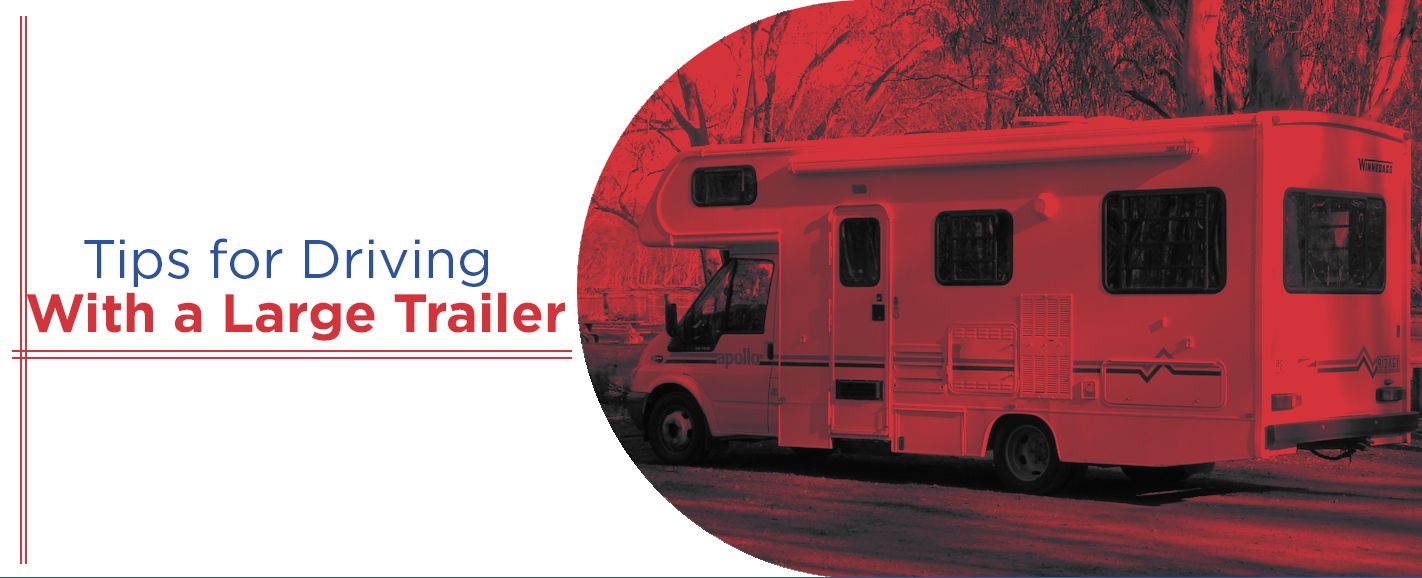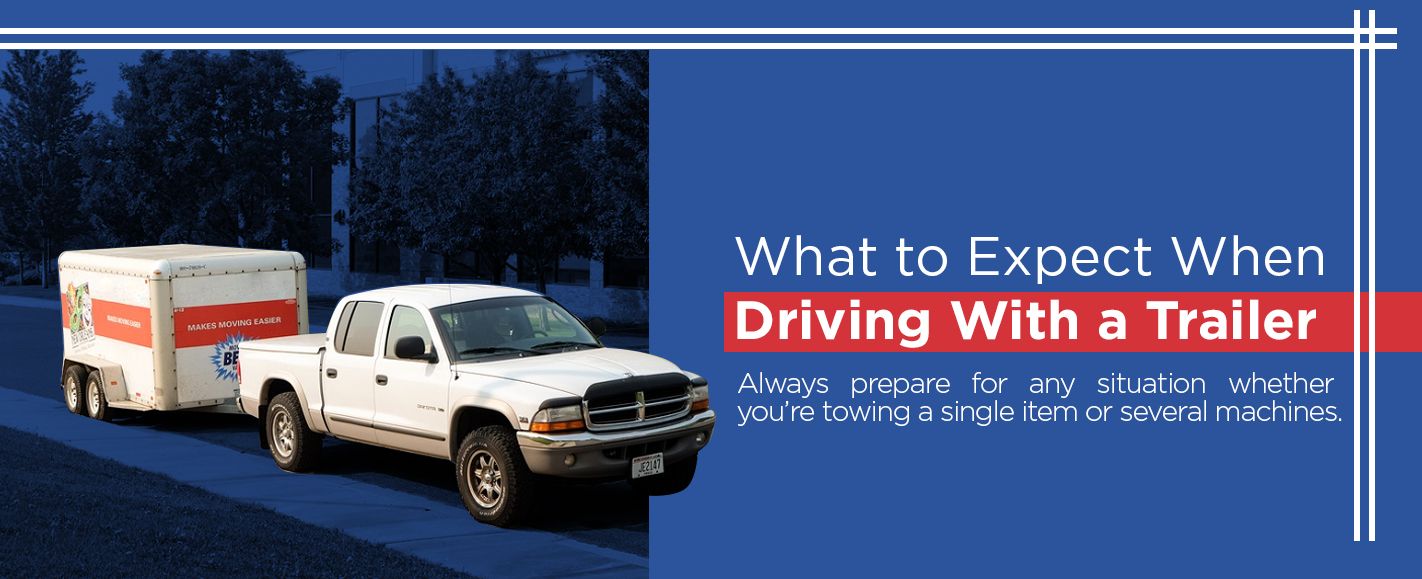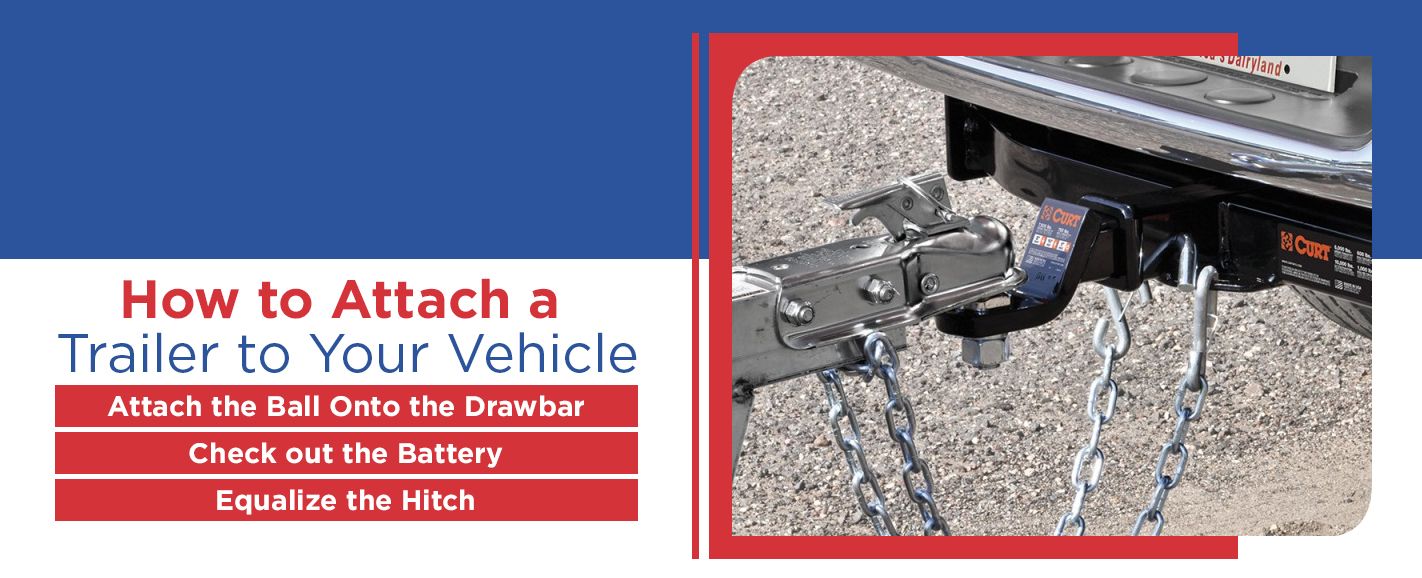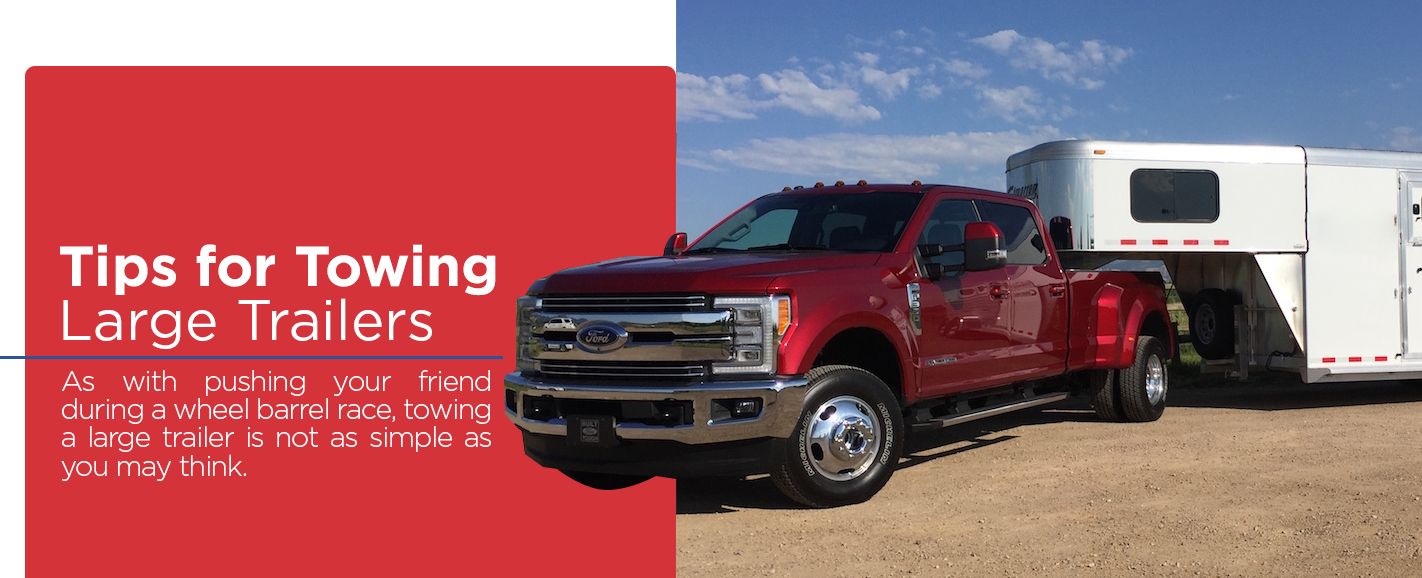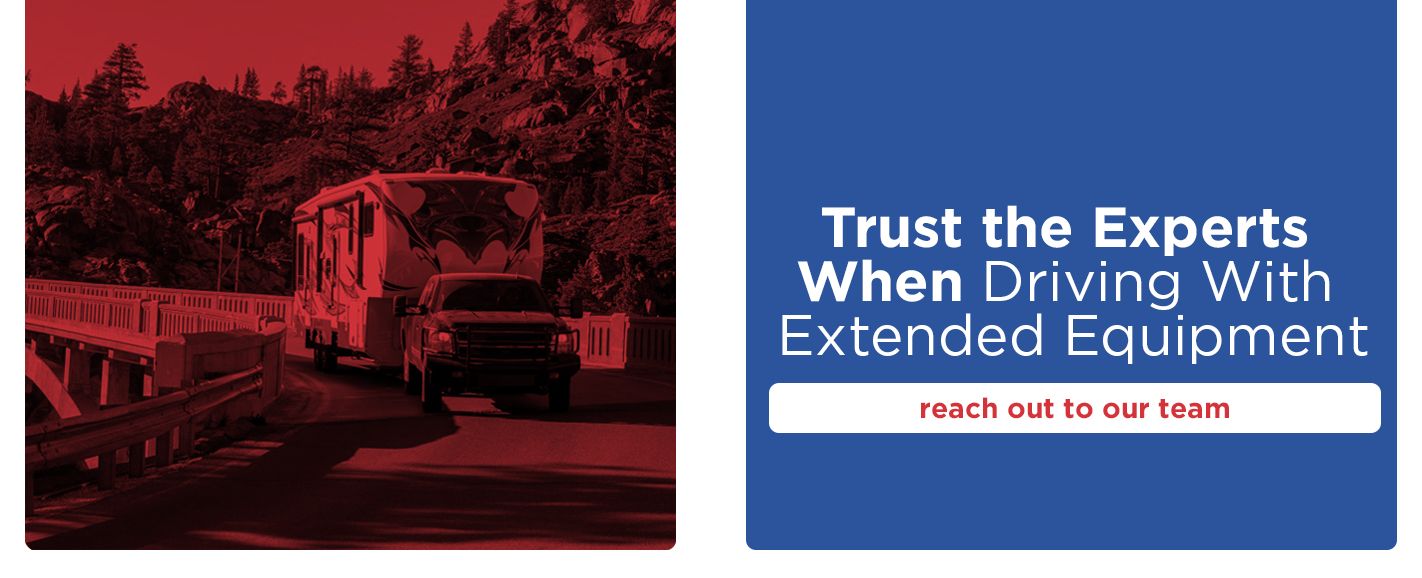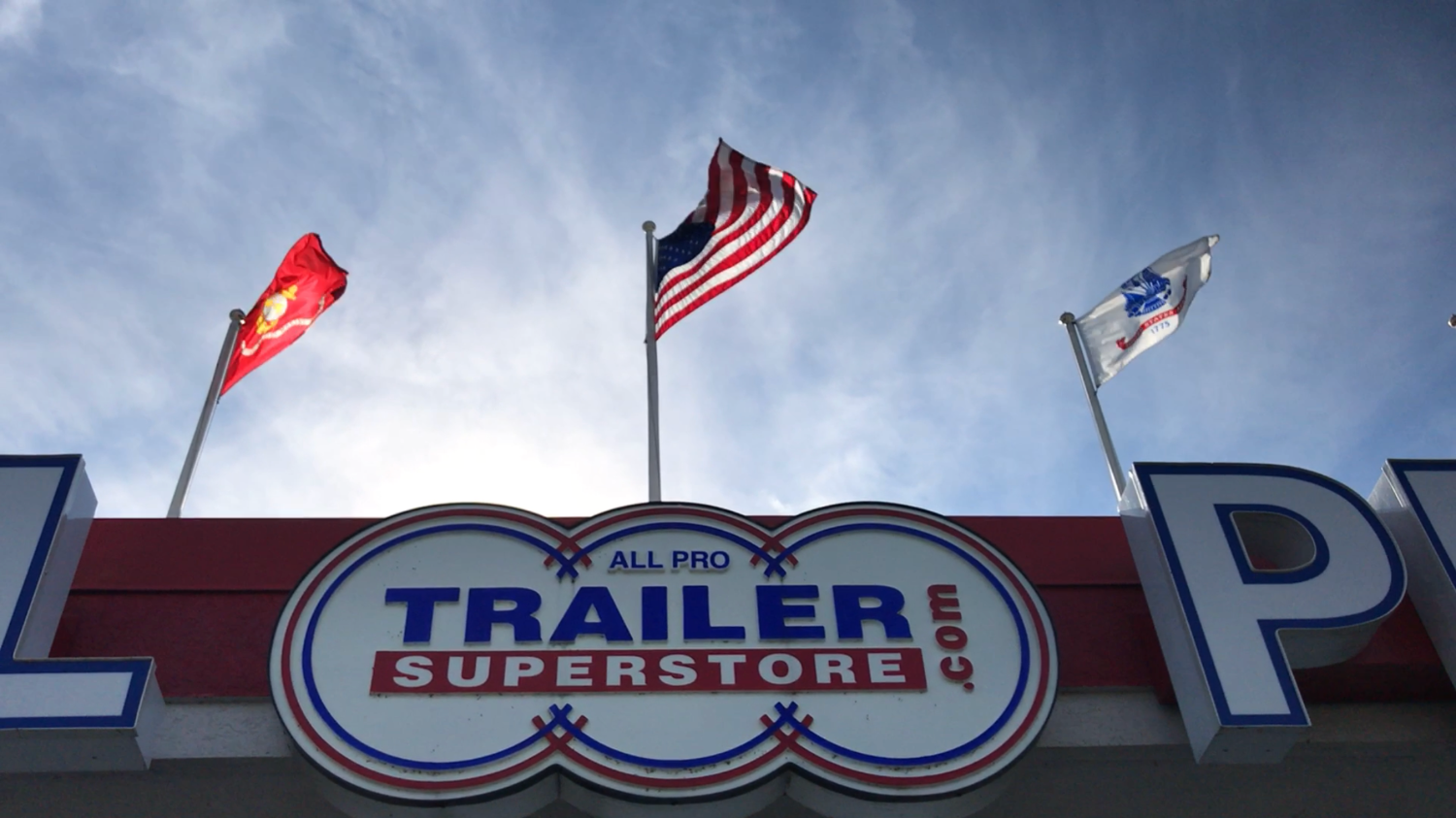Tips for Driving With a Large Trailer
Feb 12, 2019Last Updated on June 28, 2024 by Eric Miller
Last Updated on June 28, 2024 by allprotrailersuperstore
Always prepare for any situation whether you’re towing a single item or several machines. It’s imperative to be proactive and think ahead when you have a towing device behind you.
Performing a routine check before each haul is your first consideration for a safe drive. Start by checking your owner’s manual as well as your state’s driver handbook. Different rules and regulations apply to each state. Some may require you to stay in the right lane or adhere to specific speeds.
Certify that your equipment is safe to operate and that it can withstand your estimated load. Check your trailer’s lights and signals along with making sure the hitch and tongue of the trailer are together. Confirm that the locking mechanism is in place and two chains crisscross between the attachment and truck to form an X. Checking your trailer also involves inspecting the clearance connection and that the trailer wheels are in the up or drive position. Connect the electrical wires and make sure the license plate is visible.
Expect the trailer to sway back and forth. Depending on the situation or if there was improper installation of the trailer, it may sway enough to interact with other lanes and vehicles. To avoid any significant fluctuations, check your connections before departing. Small changes can make a substantial difference in the towing capabilities of your truck and trailer. For instance, when you add or subtract weight, or even rearrange the load distribution, your vehicle and trailer can handle differently.
As a final consideration, you don’t want to overload your truck because your equipment will become too tricky to handle. Again, reference your owner’s manual to see what weight your vehicle and trailer can endure.
Driving with a tow of equipment involves consideration and foreseeing the outcome before changing lanes, backing up or making turns. Always be aware of your surroundings when operating with an extra load and extended length in the back.
Table of Contents
- How to Attach a Trailer to Your Vehicle
- How to Hitch a Trailer to Your Vehicle
- Tips for Towing Large Trailers
- Backing With a Large Trailer
- Trust the Experts When Driving With Extended Equipment
How to Attach a Trailer to Your Vehicle
Step by step, you can hitch your trailer with the highest safety standards and hauling capabilities. First, make sure you’re working with the correct equipment by looking at your owner’s manual to know how much weight your vehicle can manage. Two numbers to be aware of are the gross trailer weight (GTW) and the maximum tongue weight (TW). There are five different hitch classes available based on weight:
- Class 1: 200 pounds TW and 2,000 pounds GTW
- Class 2: 350 pounds TW and 3,500 pounds GTW
- Class 3: 500 pounds TW and 5,000 pounds GTW
- Class 4: 750 pounds TW and 7,500 pounds GTW
- Class 5: 1,000 pounds TW and 10,000 pounds GTW
Choose one that matches your truck’s TW and GTW even if you plan on towing less than what the hitch can handle. Don’t forget to factor in the weight of your trailer and its contents for accurate readings.
After you determine a hitch that matches your application, select a drawbar and hitch ball. Drawbars come in two sizes — 1.25-inch and 2-inch options for lightweight and heavy-duty project respectively. Hitch balls are available in three different dimensions including 17/8, 2 and 25/16 inches. As you may guess, the size of the ball indicates how much weight it can handle. Make sure both the trailer’s ball and hitch match in size and meet the minimum gross vehicle weight rating (GVWR).
Here is a step-by-step guide on how to hook up a large trailer to your truck:
1. Attach the Ball Onto the Drawbar
Once you connect the ball and drawbar, crisscross the chains. They act as a last resort in situations where the trailer becomes unhitched. The X formation keeps the trailer from hurdling forward or to the side, and in more severe situations, the hitch will land on the crossed chains as opposed to the pavement. Chains will also not be strained while you make full turns.
2. Test the Vehicle’s Wiring
Check the plug and socket wiring, then connect the system to your truck’s wiring harness. Spray the connections with dielectric grease to avoid corrosion.
3. Check out the Battery
Examine the battery’s condition, and charge it if it has little power left.
4. Calibrate the Tongue Weight
If you increase the tongue weight of your trailer, you will boost your rig’s stability. It also helps prevent swaying. When you have little to no pressure on the tongue, it will result in no balance and the center of gravity will move between the contact patches of the tires. Therefore, you want more weight toward the front of the trailer opposed to the back.
More weight on the back can swing the vehicle and cause it to drive out of control when an outside force hits the trailer or if you make sudden movements. Move your cargo forward onto the trailer, so the center of gravity transfers to the front of the tire contact patches. The recommended tongue weight is about 10 to 12 percent of the total trailer weight.
5. Equalize the Hitch
Finding the right tongue weight may also affect the amount of pressure on the hitch. Think about attaching an equalizing bar to create a rotational force around the hitch. As it pivots horizontally, the bar transfers some weight from the tongue to your car’s front axle.
6. Consider the Hitch Height
Set the rig on flat pavement and maneuver the tongue jack until it is level. Measure the distance from the ground to the top of the ball socket, then from the bottom to the top of the hitch receiver. To consider the height of the ball, add 3 inches. Once you’ve loaded everything onto the trailer, check again and make drawbar height adjustments as needed.
7. Load Your Trailer
The best way to know the exact weight of your operation is to take weigh it on a scale at a local truck stop, feed and gravel yard or a feed store. Often, the weight listed on your registration leaves out components that you or manufacturers add after construction like ramps, batteries or tie-downs. Load up your equipment and fill the water and propane tanks if necessary.
Get the weight of the trailer by disconnecting it from the vehicle and leaving the wheels and tongue jack on the scale. Then, find the tongue weight by hitching up the equipment, but leaving the tires on the scale. Seeing both weights allow you to know if you need to rearrange any cargo to get about 10 percent of the total load on the tongue.
8. Check the Tires
Inflate the trailer’s tires to the recommended PSI along with those on your vehicle. Also, be aware of overheated wheels and any blowouts while traveling.
How to Hitch a Trailer to Your Vehicle
Here’s a quick look at how to hitch up your equipment before rolling onto the road:
- Back your truck up to the trailer.
- Lower the jack, secure the tongue latch and insert the safety keeper.
- Ensure you made a secure connection by lifting on the trailer using the tongue jack.
- Raise and secure the tongue jack so you can begin towing.
- Cross and hook the safety chains to your truck.
- Connect the lights by running the cords through a safety keeper.
- Make sure your trailer is level.
- Check the lights, brakes and signals.
- Drive with caution.
Tips for Towing Large Trailers
As with pushing your friend during a wheel barrel race, towing a large trailer is not as simple as you may think. Driving a car on the road is light work compared to controlling an extension that can move like a tail. Here are our top tips on how to control a large trailer:
- Never underestimate how difficult it is to drive a trailer. It takes practice and patience. It’s a smart idea to practice pulling in out of driveways and other locations. You can navigate through back roads before launching into heavy traffic and execute wide turns in a parking lot. For some, it may be easy to pick up, but practice makes perfect and increases your safety.
- The size of your trailer affects how many adjustments you need to make as a driver. For example, a small trailer may not give any noticeable changes or difficulties. But pulling a boat or heavy rig is different. A bigger rig requires enhanced driving skills, increased attention on the road and knowing how your truck handles in various conditions.
- Increase the distance between you and other vehicles. Compared to normal driving without any extended loads, you will want more of a safety net. Because you’re moving extra weight, it is more difficult to stop, especially when traveling at high speeds. Your trailer will need additional stopping distance.
- Perform wider turns. Take your time and swing your truck to make full turns to avoid hitting other cars, curbs, telephone poles or fences. Being excessive when turning with a large trailer will also help prevent you from running off the road. Because your vehicle can be up to double in length, overshoot every move. When you start to cut corners, you run the risk of damaging your trailer and truck. You also increase the chance of causing an accident.
- Check the clearance of your trailer. Adhere to your state’s regulations and be aware of your equipment’s height when driving through tunnels or under bridges. Make sure to fasten everything down and that the weight of your trailer is equal to or less than your truck’s towing capacity.
- Try to avoid small parking lots. Park where there is plenty of room or use several parking spaces. You want to make sure there is adequate space for your trailer and that it’s not obstructing traffic. Parking in a remote section of the lot is a smart move too.
- Inspect your rig each time you stop. Tighten up the straps every chance you get because they can loosen from the constant vibrations from the trailer contacting the pavement. While you’re checking the tension, also examine the hitch and wiring system. Make sure the tires are inflated and that the wheel bearings aren’t hot because that could indicate failure.
- Take your time. Since you’re operating a massive load, there are more components to consider. Drive slower when you’re in traffic. Remember that while acceleration takes longer with a hefty load in your trailer, it also takes longer to stop.
Maintaining control over the vehicle and trailer is crucial for safe transportation. After you complete your haul, shut off the auxiliary battery, propane tank and water pump if applicable. You may also want to consider sliding blocks behind your trailer wheels as an extra safety precaution.
Backing With a Large Trailer
Driving forward has its challenges, but reversing with a trailer or camper takes further expertise and proficiency. Practice in open areas with no obstructions in the way. Take your time and feel how the trailer responds to each movement. And remember, you can always start over if you’re struggling by straightening out the rig. It may take time and several adjustments to back up a trailer, but here are a few tips to get you in the right direction.
Backing up a trailer involves more exaggerated movements to get the hitch ball in the correct position. Focus on the direction of the hitch ball and not the trailer. Turn left to go right and right to go left. Be cautious that the tongue of the trailer doesn’t collide with the bumper of your vehicle because it can cause damage and create dangerous situations.
In fact, too sharp of a turn can cause the trailer to jackknife, meaning it turns too far in one direction and the angle between the trailer and truck reaches 90 degrees or less. Moving in a straight line is excellent, as well as a near-L shape when backing up. When it hits a V shape, it can become hazardous. Avoid jackknifing by never letting your trailer pass the L shape or 90 degrees.
Trust the Experts When Driving With Extended Equipment
All Pro Trailer Superstore is one of the top full-service trailer providers in the nation, here to support any towing job from landscaping, construction and racing to hunting, farming and mulching operations. As a one-stop provider, our team offers 10 supplementary services on top of delivering top-tier trailer solutions. We carry an extensive inventory of trailers, accessories and towing products.
If you are new to towing a trailer or need further support with your equipment, reach out to our team of professionals online. We strive to remain committed, reliable, efficient and educated specialists in every aspect involved with our products. Trailer Superstore’s team will help you decide which trailer you need and how it will fit into your experience, application and budget.


